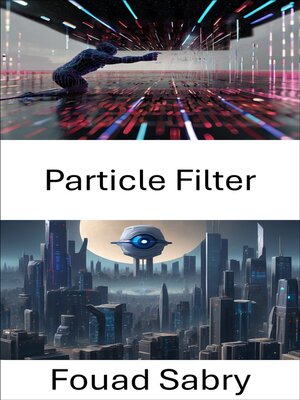Particle Filter
ebook ∣ Exploring Particle Filters in Computer Vision · Computer Vision
By Fouad Sabry

Sign up to save your library
With an OverDrive account, you can save your favorite libraries for at-a-glance information about availability. Find out more about OverDrive accounts.
Find this title in Libby, the library reading app by OverDrive.



Search for a digital library with this title
Title found at these libraries:
| Library Name | Distance |
|---|---|
| Loading... |
What is Particle Filter
Particle filters, or sequential Monte Carlo methods, are a set of Monte Carlo algorithms used to find approximate solutions for filtering problems for nonlinear state-space systems, such as signal processing and Bayesian statistical inference. The filtering problem consists of estimating the internal states in dynamical systems when partial observations are made and random perturbations are present in the sensors as well as in the dynamical system. The objective is to compute the posterior distributions of the states of a Markov process, given the noisy and partial observations. The term "particle filters" was first coined in 1996 by Pierre Del Moral about mean-field interacting particle methods used in fluid mechanics since the beginning of the 1960s. The term "Sequential Monte Carlo" was coined by Jun S. Liu and Rong Chen in 1998.
How you will benefit
(I) Insights, and validations about the following topics:
Chapter 1: Particle filter
Chapter 2: Importance sampling
Chapter 3: Point process
Chapter 4: Fokker-Planck equation
Chapter 5: Wiener's lemma
Chapter 6: Klein-Kramers equation
Chapter 7: Mean-field particle methods
Chapter 8: Dirichlet kernel
Chapter 9: Generalized Pareto distribution
Chapter 10: Superprocess
(II) Answering the public top questions about particle filter.
(III) Real world examples for the usage of particle filter in many fields.
Who this book is for
Professionals, undergraduate and graduate students, enthusiasts, hobbyists, and those who want to go beyond basic knowledge or information for any kind of Particle Filter.







